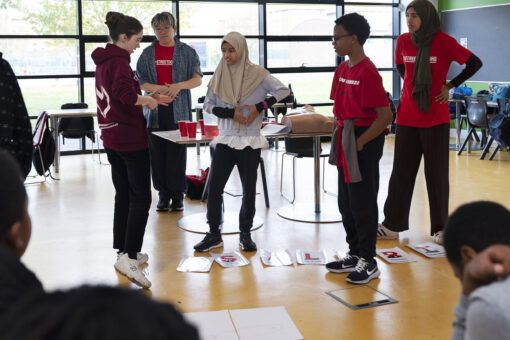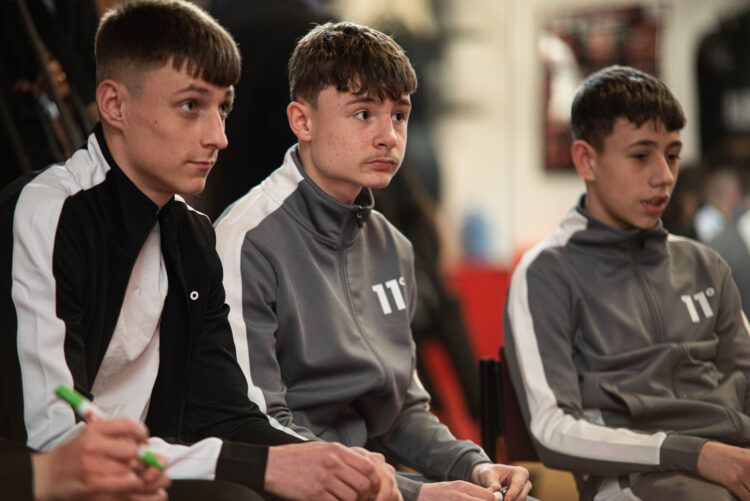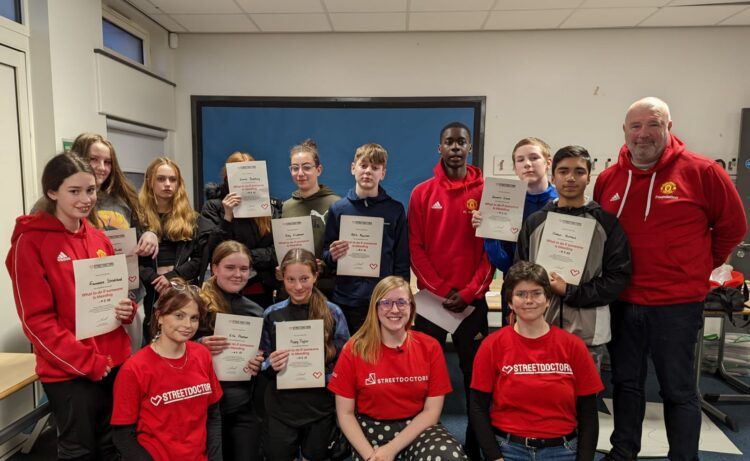
What is violence affecting young people?
Our definition of violence affecting young people is any violence that takes place on the street or in a public place, where the people involved are aged under 25.
This is often called knife crime or youth violence. We instead talk about violence affecting young people, because we want to reduce the blame placed on young people – it is not a young person’s fault if they are caught up in violence and street crime, there are much wider societal factors that need to be urgently addressed if we really want to reduce violence.
We believe that for young people caught up in criminal exploitation and violence, a child protection and safeguarding approach needs to be taken; enforcement alone will not solve the problem.
Statistics show:
- Worldwide, homicide is the 4th leading cause of death for 10–29-year-olds.1
- In the UK, possession of and harm done by weapons (such as knives and sharp objects) continues to rise: knife-enabled crime increased 6% in the past year, and knife-enabled threats-to-kill increased by 22% (compared with 2020).2
- In the year ending March 2022, there were nearly 45,000 knife crimes in England and Wales – 9% higher than the previous year.3
- West Midlands, Cleveland and Metropolitan Police are the police force areas with the highest rates of knife-enabled crime per 1000 of population. Dorset, North Yorkshire and Surrey are the lowest areas.4
- In the year ending March 2022, 282 people were stabbed to death and the number of victims aged 16 to 17 doubled.5
- In London alone, 30 young people were killed by violent street crime in 2021, the highest number in one year on record.6
- In Manchester serious violence affecting young people has increased 200% since 2019.7
We know that these reported figures are just the tip of the iceberg; for every offence, injury or tragic death reported, thousands of young people and their friends, families, and communities are implicated and traumatised both physically and emotionally.
What causes street violence?
Listed are some of the many societal risk-factors that increase the chances of young people getting caught up and affected by street violence. All of these risk-factors have been exacerbated by lockdowns and COVID-19:
- Adverse Childhood Experiences (ACEs) such as growing up in difficult circumstances, parental mental health and addiction issues, domestic violence, and experiencing or witnessing neglect, physical, verbal or sexual abuse.8
- A lack of safe spaces, such as good youth provision.9
- A lack of opportunities to take part in meaningful activities, have access to decent education, and employment.10
- A lack of support and understanding at school leading to low educational attainment and/or permanent and temporary exclusion from school.11
- Grooming and criminal exploitation, such as county lines drug gangs.12
- Having a sibling or parent in prison or with experiences of the criminal justice system for violent crime.13
- Poverty, poor quality housing and food, and lack of access to decent healthcare.14
- Experiencing mental health issues.15
- Not having positive role models.10
- Easy access to sharp weapons.10
- Young people carrying weapons out of fear and to protect themselves.10
- Racism, a mistrust of authorities and a lack of hope for the future.16

What is taking a ‘public health approach’ to violence?
A ‘public health approach’ looks at all the issues outlined above and acknowledges that although the criminal justice system (police, courts and prisons) does have a part to play in reducing violence, they simply cannot solve the root causes of violence.
Instead, a ‘public health approach’ calls for society-wide focus on these root causes of violence, and advocates for all relevant sectors of society to work closely together to create safer places for young people, where safeguarding, trauma reduction and wellbeing takes top priority. This means close partnerships between schools, local authorities, police and criminal justice, healthcare, families and communities.
How does StreetDoctors take a ‘public health approach’?
At StreetDoctors, we have created our own ‘public health approach’ to reducing violence. This involves:
- Bringing together local young healthcare students and professionals (our volunteer trainers) with young people affected by violence. Our peer-to-peer approach enables young people to gain access to positive role models, showing that a future away from violence is possible. It also empowers our volunteers to become better healthcare professionals who understand more about the issues of violence and how it affects young people.
- Working closely with Violence Reduction Units (VRUs) who commission our emergency first aid training sessions for young people in their areas.17
- Partnerships with a range of statutory and voluntary groups. For example the Premier League Kicks Foundation, which enables us to work with football clubs such as Cardiff City, Manchester United and Arsenal. We deliver our training to young people affected by violence during their football training, helping them be part of safer communities on and off the pitch.18

References and further reading
- Youth violence factsheet, World Health Organisation, 8 June 2020
- ‘Knife or Sharp Instrument Offenses’, Crime in England and Wales: Year Ending December 2020, ONS, 27 April 2023
- Knife Crime Statistics, House of Commons Library, 11 January 2023
- ‘Map reveals most dangerous place in the UK for knife crime’, The Sun, 27 April 2023
- ‘Black people four times as likely to be murdered as white people, ONS data shows’, The Guardian, 9 February 2023
- ‘”He was not in a gang”: lives and deaths of 30 London teenage homicide victims’, The Guardian, 31 December 2021
- ‘Children killing children: inside Manchester’s knife crime epidemic’, Manchester Evening News, 30 January 2022
- Find out more about understanding Adverse Childhood Experiences and the link to crime: ‘Understanding Childhood Adversity, Resilience and Crime’, Justice Analytical Services, The Scottish Government, 2018
- ‘Almost a billion-pound decline in funding for youth services by local authorities across England and Wales’, YMCA, 2020
- ‘Lives Not Knives: Young People’s Perspectives on Knife Crime’, Nacro, January 2020
- ‘Back to School? Breaking the link between school exclusions and knife crime’, All Party Parliamentary Group on Knife Crime, October 2019
- What is County Lines and what to do if you are concerned? ‘County Lines’, National Crime Agency
- Young people exposed to violence, crime and the criminal justice system within their family are more likely to perpetrate violence themselves. If a person has a sibling who has been charged with a violent crime they are four times more likely to commit a violent crime themselves. If a young person has a father in prison they are more likely to be convicted of crime themselves. ‘Preventing youth violence: an overview of the evidence’, World Health Organisation, January 2015, page 15
- “Three-quarters of the boroughs in London with the highest levels of violent offending are also in the top 10 most deprived, while the same boroughs also have higher proportions of children under 20 living in poverty than the London average.” ‘Revealed: full links between poverty and violent crime in London’, Mayor of London, July 2019
- Young people involved in street violence and/or gangs are 95% more likely to have social, emotional and mental health issues, and eight times more likely to be misusing substances. ‘The Characteristics of gang-associated children and young people’, Tom Clarke, Children’s Commissioner, February 2019
- YouTube: Youth violence and a poverty of hope: what needs to change? StreetDoctors panel discussion 2020
- Find out more about Violence Reduction Units: ‘Violence Reduction Units in Focus’, Association of Police and Crime Commissioners, 9 September 2020
- Find out more about the Premier League Kicks Foundation
